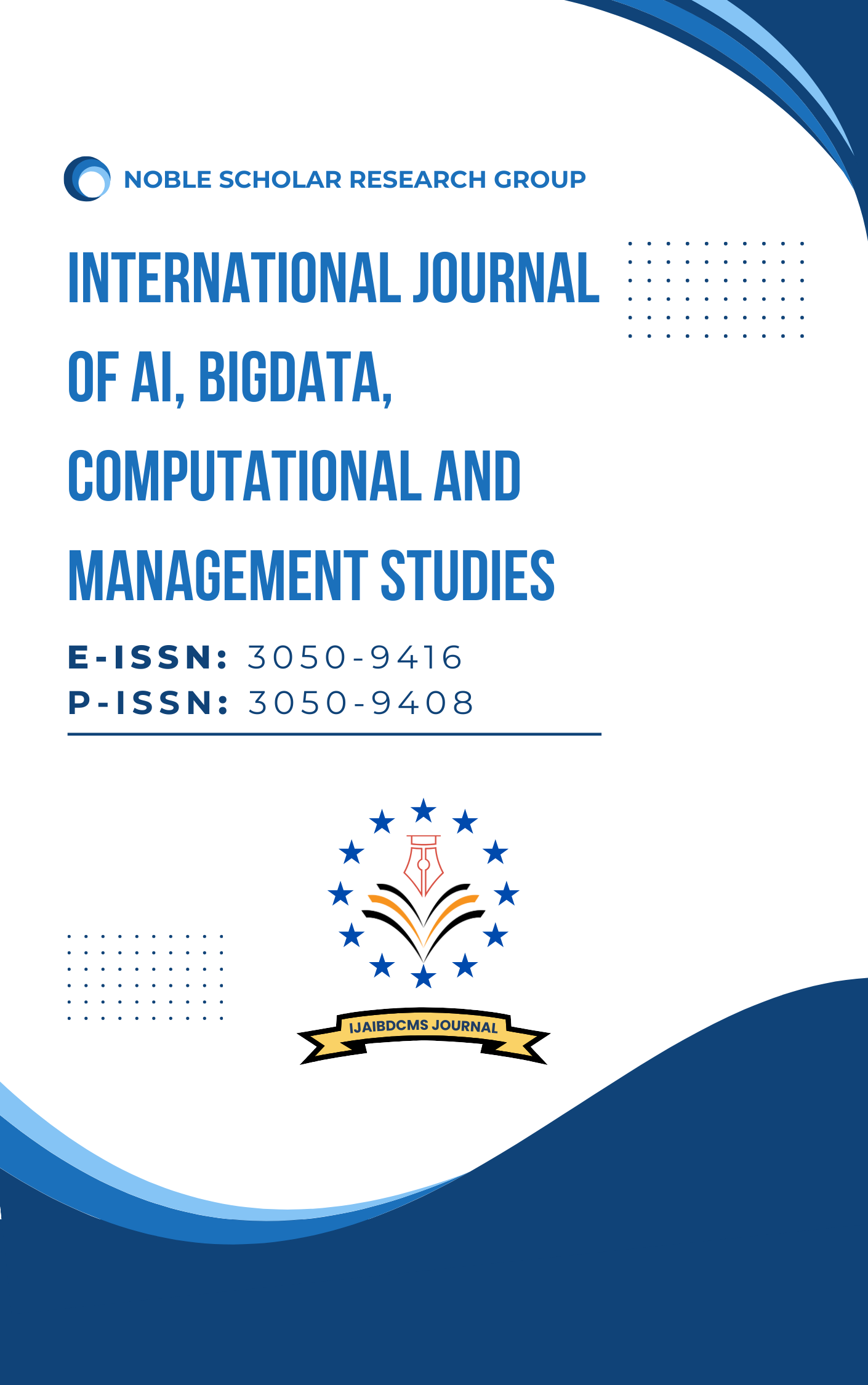A Hierarchical and Cloud-Integrated Architecture for Industrial Automation and IoT-Based Data Processing
DOI:
https://doi.org/10.63282/3050-9416.IJAIBDCMS-V2I1P101Keywords:
Industrial Automation, IoT, Edge Computing, Cloud Computing, Data Processing, Machine Learning, SCADA, Predictive Analytics, Smart Manufacturing, Industry 4.0Abstract
The integration of Industrial Automation (IA) and the Internet of Things (IoT) has revolutionized the way industries operate, enabling real-time monitoring, predictive maintenance, and optimized resource utilization. However, the sheer volume and complexity of data generated by IoT devices pose significant challenges in terms of data processing, storage, and analysis. This paper proposes a hierarchical and cloud-integrated architecture designed to address these challenges. The architecture consists of edge devices, fog nodes, and cloud servers, each layer responsible for specific data processing tasks. The paper discusses the design, implementation, and evaluation of this architecture, highlighting its benefits in terms of scalability, efficiency, and security. Additionally, a novel data processing algorithm is introduced to optimize the distribution of tasks across the hierarchical layers. The results of our experimental evaluation demonstrate the effectiveness of the proposed architecture in handling large-scale industrial data
References
1. Pop, P., Lukkien, J. J., Mubeen, S., & Španić, K. (2020). The FORA fog computing platform for industrial IoT. arXiv preprint arXiv:2007.02696. Retrieved from https://arxiv.org/abs/2007.02696
2. Pizzolli, D., & Facca, F. M. (2018). Cloud4IoT: A heterogeneous, distributed and autonomic cloud platform for the IoT. arXiv preprint arXiv:1810.01839. Retrieved from https://arxiv.org/abs/1810.01839
3. Jayaraman, P. P., Yavari, A., Georgakopoulos, D., Morshed, A., & Zaslavsky, A. (2016). Analytics-as-a-Service in a multi-cloud environment through semantically enabled hierarchical data processing. arXiv preprint arXiv:1606.07935. Retrieved from https://arxiv.org/abs/1606.07935
4. González García, C., & Skarmeta, A. F. (2018). Hierarchical cloud computing architecture for context-aware IoT services. IEEE Transactions on Consumer Electronics, 64(2), 183-191.
5. Borgia, E. (2014). The Internet of Things vision: Key features, applications, and open issues. Computer Communications, 54, 1-31. https://doi.org/10.1016/j.comcom.2014.09.008
6. Xu, L. D., He, W., & Li, S. (2014). Internet of Things in industries: A survey. IEEE Transactions on Industrial Informatics, 10(4), 2233-2243. https://doi.org/10.1109/TII.2014.2300753
7. Al-Fuqaha, A., Guizani, M., Mohammadi, M., Aledhari, M., & Ayyash, M. (2015). Internet of Things: A survey on enabling technologies, protocols, and applications. IEEE Communications Surveys & Tutorials, 17(4), 2347-2376. https://doi.org/10.1109/COMST.2015.2444095
8. Mayer, R., & Fuchs, M. (2018). Reference architecture for fog computing: A high-level viewpoint. In 2018 IEEE 2nd International Conference on Fog and Edge Computing (ICFEC) (pp. 1-10). IEEE. https://doi.org/10.1109/ICFEC.2018.8358719
9. Shi, W., Cao, J., Zhang, Q., Li, Y., & Xu, L. (2016). Edge computing: Vision and challenges. IEEE Internet of Things Journal, 3(5), 637-646. https://doi.org/10.1109/JIOT.2016.2579198



